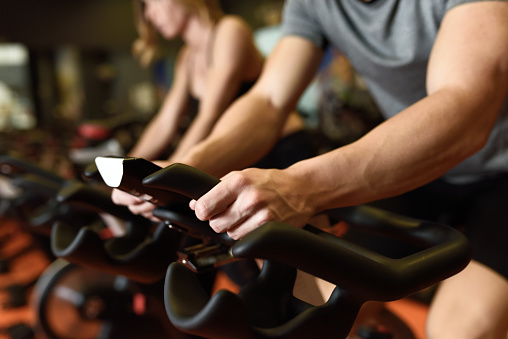Surge Cycling is an indoor cycling and spinning studio in Saint Louis Park, Minn. Co-owner Ken Anderson remembers back in 2013 when he and partner Zion first opened. They got their first customer through Facebook viewership. “Facebook is an extremely valuable tool for new businesses,” says Ken. “The word spreads fast if you create interesting and meaningful posts.”
Referrals are by far Surge’s most important method for getting leads and new customers. As Ken says, “We feel that if you deliver a top-notch service, stand behind what you do, and make clients feel important and wanted, they will tell their friends.”
Surge uses six primary CRM (customer relationship management) tools, two of which are social media channels. The first, of course, is the aforementioned Facebook, which connects to—and creates relationships with—clients 24/7. “The posts have to be interesting, pertinent to your business, and stand out from your competition,” Ken says. “And, as a business, it’s an absolute must to respond to comments, so people feel noticed and connected.” Surge also uses Instagram, which has been gaining in popularity.
For managing clients and reservations, Surge uses two other CRM tools: Zenrez—which provides sales software for fitness studios—and MINDBODY—which supports business management. The fifth CRM tool Surge uses, Constant Contact, helps them manage their email marketing, and ClassPass—a third-party reservation tool—is the sixth.
Now that Ken has been in business for five years, he says the most important thing he’s learned about keeping customers happy and coming back for more is this: “It’s all about the client’s needs, not yours. It’s about making them feel special and important. The client is everything.” That’s why, whenever someone walks into their studio, Ken and his staff welcome each client by his or her first name to show that they care.
Ken has also learned that it’s important to be yourself, not someone you think customers want you to be. As he puts it, “People are smart; they can see through BS. But, of course, be your professional self. Be sincere. Never fake. Apply humor! Do everything possible to make sure they leave feeling happy and satisfied.” Ken recommends asking yourself in normal day-to-day interactions with clients, “What can I do to make this person happy?” and then doing exactly that.
There are other things that Surge Cycling does to keep and attract customers. First, its instructors are the driving force behind helping Surge operate and grow. Second, its front desk crew—who create the first impression for clients—are focused on providing the best customer service. “If our customers have a glorious experience,” Ken adds, “there is no doubt they will tell their friends. That’s how we grow at Surge.”
Ken does sometimes ask for reviews and testimonials because he says that it seems people are taking less time to write reviews as compared to previous years. As he describes it, “You really want to rely on organic reviews; however, sometimes you just gotta ask—because reviews are so important.” Ken says there’s a difference between asking someone for a great five-star review, compared to simply asking for an honest review of their experience. So, occasionally, he’ll ask clients to share their experience on Google or Yelp, and about half of them will do so.
Ken proudly shares that Surge had a client who lost 90 pounds from riding at the studio. She works very hard, comes in at least five times a week, and lost the weight in less than a year! She took control of her diet and made exercise the most important part of her day. “We are so proud of her,” Ken says, “and were amazed to see her transformation over the course of the year. It makes us feel good that we provided a safe, fun, and effective method for her to reach her goal.”
As for the importance of word-of-mouth advertising, Ken says, “Nothing is more important! If people are talking about you and spreading the love, that is a huge sign that you are doing something right.”
Surge differentiates its indoor cycling service by offering 45-minute classes, as opposed to the 55- or 60-minute workouts its competition offers. “We believe in intensity over duration,” Ken says, “and our clients appreciate being able to get in and out quicker!” Ken adds that Surge also “believes in community over competition. When you hop on that bike, you hop on as yourself. Everyone comes in at different fitness levels. Everyone has a story. You ride at your own pace, you go at your own flow, and our instructors constantly remind the class, ‘just do you.'”
Another difference at Surge is that it doesn’t display riders’ progress on huge monitors for everyone to see. Instead, each bike comes with its own private console, providing measurements for progress. And Surge instructors create thoughtfully curated playlists to make clients want to come back for more.
Ken says, “Surge is living proof of the American dream.” His partner Zion was born in Taipei, Taiwan, and her parents immigrated to this country 48 years ago, “because they knew the good ol’ USA was the land of great opportunity. They were told that America was where anyone could pursue and achieve their dream with a sound education and hard work—along with more hard work.”
Zion’s parents instilled in her an attitude of never taking anything for granted. After working in corporate America for 20 years, she wanted to do something more inspiring. “So I jumped ship and never looked back,” she says. “Today, I can proudly say that I am an Asian-American woman who created this space for folks who want some cardio fun, to elevate their health, and discover their love to sweat!”





